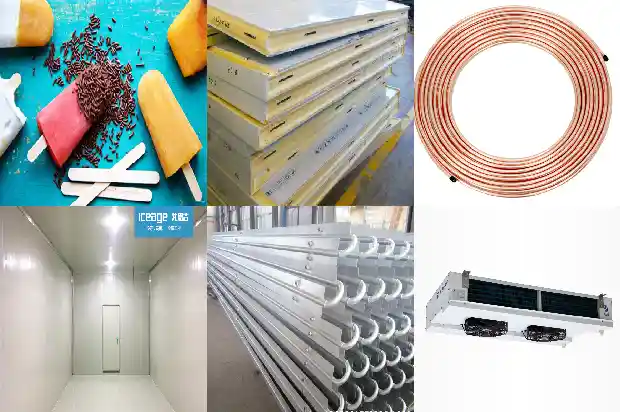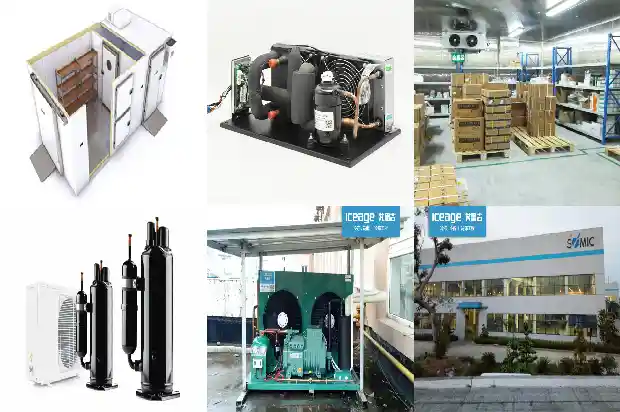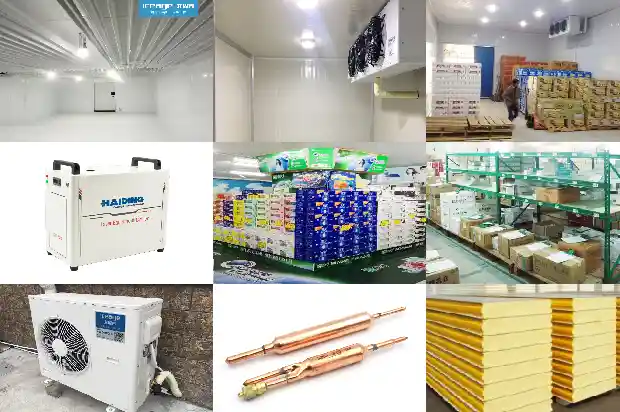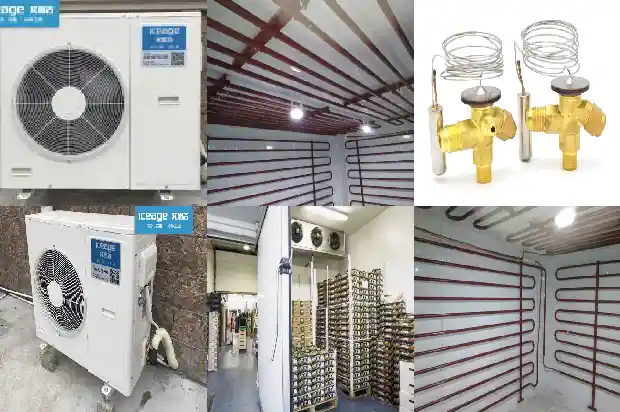How to Identify the Quality of Refrigeration Equipment Installation Materials?
2025-01-02
The commonly used installation materials for refrigeration and air - conditioning installation mainly include: refrigerant copper pipes, insulation cotton, condensate water pipes, and branch pipes. So, how to distinguish the quality of these refrigeration materials?
I. Refrigerant Pipes
- Check the color: Currently, the best refrigerant copper pipes are red copper pipes, with a purity of over 99%, known as pure copper, showing a rose - red color. Other copper pipes are mostly alloy copper pipes. For example, brass pipes are composed of a copper - zinc ratio of 7:3 and appear yellow.
- Touch by hand: The inner and outer walls of high - quality refrigerant copper pipes are smooth and clean, without sand holes, oxidation, cracks or other defects.
- Bend the copper pipe: High - quality copper pipes have no creases and do not deform after bending.
Inferior copper pipes are prone to creases and are easily squeezed and deformed after bending.
- Copper pipe process: Nowadays, the production of copper pipes mainly includes extruded copper pipes and drawn copper pipes. Extruded copper pipes have a thicker and more uniform wall thickness, while the wall thickness of drawn copper pipes is likely to be uneven. The new refrigerant R410A has a high operating pressure, and the weak parts of the wall thickness of drawn copper pipes are prone to bursting.
II. Condensate Water Pipes
- Check the surface: Observe the surface smoothness and whiteness of the water pipe. For good condensate water pipes, the inner and outer colors are the same, presenting a creamy white color, and the surface has an oily sheen. If the color is overly white, there may be too much calcium powder. If it is yellowish, the PVC material may be of poor quality, easy to oxidize and have poor weather resistance.

- Measure the wall thickness: The wall thickness of a good condensate water pipe should be uniform and the wall surface should be smooth. A thicker wall is better.
- Sampling test: Pipes that are abnormally white and bright but easy to break when dropped are generally high - calcium products with added calcium powder. Take a sample and step on the edge of the pipe with your foot to see if it easily cracks.
III. Insulation Cotton
The national standard GB8624 - 97 classifies the combustion performance of materials as follows: Class A non - combustible, Class B1 flame - retardant, Class B2 combustible, and Class B3 highly flammable. Class A is the highest standard. Class B1 materials burn when exposed to fire and self - extinguish when the fire source is removed.

- Check the appearance: For insulation cotton, the smaller and finer the foaming pores are, the better the anti - vibration, heat - insulation and heat - preservation effects will be.
- Measure the wall thickness: For the same grade, when the pre - installed copper pipe/water pipe diameter is the same, the thicker the insulation wall thickness, the better the heat - preservation effect. And there are corresponding national standards for the thickness of insulation cotton for each pipe diameter.
- Compression test: Grasp and squeeze the insulation with your hand. If it is easily deformed after being squeezed, it is generally inferior insulation; if it does not deform after being squeezed, it is generally high - quality insulation.
IV. Branch Pipes
- Check the appearance: High - quality branch pipes have a bright color, uniform and firm welding, and the inner and outer walls of the pipe are clean, without impurities or dirt.
Poor - quality branch pipes are prone to welding detachment, have impurities and are easy to oxidize.
- Measure the wall thickness: The thickness of the copper pipe used for the branch pipe should be determined according to the size of the diameter. The larger the diameter, the thicker the copper pipe should be. Generally, for a diameter of 22.3 or less, a 1mm - thick copper pipe is sufficient. For 31.8 and below, a 1.3mm copper pipe is used, and for 35 and above, a 1.5mm copper pipe is preferably used. Using the appropriate thickness of copper pipe can ensure the quality to the greatest extent. Like copper pipes, branch pipes should preferably be made of red copper, especially the branch pipes made of special red copper pipes for R410A.
Related Articles
- Technical Features and Quality Judgment of Stainless Steel Cold Storage Panels
- How to Judge the Quality of Capacitor for Refrigeration Compressor?
- Technical quality requirements for refrigerators after repair
- How to distinguish the quality of refrigeration compressor unit of constant temperature and humidity test chamber?
- Have You Encountered the Three Common Problems of Refrigeration Compressors?
- How to Calculate Refrigeration Load? And What Are the Issues?
- What to Do if the Compressor of a Frozen and Refrigerated Display Cabinet Runs but the Refrigeration Effect Is Poor?
- Instructions for Welding and Drainage in the Installation of Refrigeration Equipment Pipelines
- Common Pressure Valves and Protection Devices in Refrigeration Units
- Precautions for Using Rotary Refrigeration Compressors
- What Misconceptions Should Be Avoided in Low - temperature Refrigeration System Repairs
- Essential for Maintenance! Parameters and Phenomena of Normal Operation of Refrigeration and Heating Systems
- Composition and Common Faults of Screw Refrigeration Compressors
- How to Read the High - and Low - Pressure Gauges of Refrigeration Air - conditioners?
- What is Cascade Refrigeration?
- Introduction to Control Valves in Refrigeration Systems
- Welding Equipment Used in Refrigeration System Maintenance
- Where Lie the Key Construction Technologies of the Ammonia Refrigeration System?
